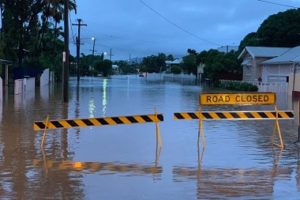The severe impact of climate change is widening the gap in home insurance affordability for Australian households, says a recent green paper report from Finity.
 The Australian insurance industry has seen increasing losses from extreme weather-related events over the last ten years, despite allowing for inflation and exposure growth.
The Australian insurance industry has seen increasing losses from extreme weather-related events over the last ten years, despite allowing for inflation and exposure growth.
2022 has seen the highest ever flood loss, and hardening property reinsurance rates at the latest renewals are setting expectations that home insurance premiums will continue to rise, says Finity.
10% of Australian households today face home insurance premiums of over four weeks of gross household income. The report notes that while there is no clear definition of “unaffordable”, these households face extreme financial pressure to pay the premiums.
There is also a clear overlap between areas with high premiums and areas with low incomes.
Low-income households might only be able to afford housing in outer suburbs of cities or rural areas, which are exposed to bushfires and are often within flood plains.
Finity authors also note groups with socioeconomic disadvantage, including older or retired Australians, single-parent families, and renters, were over-represented in vulnerable households. Further analysis showed that vulnerable householders lived in areas with low socioeconomic status and had low insurance literacy and low savings.
The green paper report makes several policy recommendations to address these issues, stating that many of the solutions come from outside insurance, and will require close collaboration between governments, insurers, banks, and other stakeholders:
• Structural solutions to improve infrastructure resilience (such as levees, floodways, and sea walls).
• Managed retreat from risk-prone areas.
• Better land use and planning and changes to building codes to allow for the impact of climate change over time, and to reduce development in high-risk areas.
• Nature-based solutions for improving resilience.
• Close consultation with First Nations Australians on more resilient ways of living within the Australian landscape.
• Options to subsidise insurance for low-income households to supplement the cyclone reinsurance pool.
• Improved data collection and availability on home insurance affordability as well as vulnerable assets, natural hazards, and the impact of climate change; and
• Replacement of State stamp duty and levies with more equitable and efficient sources of revenue.
Banks will also be challenged by these results, suggests the report, as requiring customers to obtain building insurance is the key control used to manage climate physical risk. If the insurance becomes unaffordable, then this control will likely fail and banks will be left with a substantially increased residual risk.


